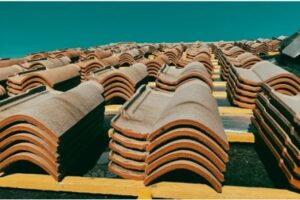If you work in potentially hazardous situations and are prone to fire injuries, FR resistant clothes can help you maintain your safety.
If a person is accidentally exposed to a flash fire or an electric arc in a very short duration of time, nonflame resistant clothing can burn and cause a major injury.
In such cases of extreme injury, the survival rate is also significantly low, and even if the injured person survives the recovery is a very slow and painful process.
Flame resistant clothes, fortunately, provide safety to the people in case of accidental arc flashes or fire exposure. The fabrics don’t catch fire and thus do not burn, gaining you the time to escape the site of the accident. You can also look for some high quality FR Pants at FROutlet.com.
Let us now see how FR clothing work to protect us from fire hazards.

FR Clothing – Their working mechanism
Fire resistant clothes are an integral part of any company’s safety program and rightly so.
Fire resistant clothing prevents combustion in case of fire emergencies. Now in order for you to understand how fire resistant fabrics work, you need to know what combustion is.
A combustion cycle will start when the fabric of clothing is exposed to a high temperature fire source, exceeding your fabric’s temperature resistant threshold.
Now there is a potential for such risks when you work in a potentially hazardous situation. Jobs like electric utility or chemical plants are prone to electric arcs and fire flashes.
When such high-temperature fire energy hits the surface of your fabric, the thermal energy starts to decompose your fabric rapidly.
As a result, the fabric begins to char releasing flammable as well as non-flammable gases. The flammable gases are released from the fabric when coming in contact with the oxygen molecules in the air, and combustion begins.
The result of combustion is the release of even more heat energy causing the combustion cycle to go on and causing the clothes to burn out completely.
This is where fire-resistant technologies come into work. They help in preventing fire by stopping the cycle of combustion.
Fabrics manufactured from nylon or aramid take a significantly high temperature to start decomposing and thus the combustion cycle doesn’t start in absence of rapid decomposition.
The dyes used in the fabric might wear off but the fabric doesn’t actually catch fire.
Flame retardant fabrics like cotton stop the combustion cycle by displacement or dilution. Cottons are chemically treated to become flame retardant and when it comes in contact with thermal energy, the FR cotton fabric releases water vapor that assists in diluting the flammable gases and thereby stopping the cycle of combustion.
Fabrics that contain modacrylic fibers release hydrogen halides when they come in contact with fire arcs or flashes, displacing the oxygen. This too breaks the cycle of combustion from reoccurring.
There is another type of flame resistant material that contains halogens and antimony oxides. They prevent combustion from occurring by radically scavenging the oxygen.
These are all the combustion stopping technologies that are used by flame resistant clothing to prevent the fabric from catching fire. Thereby protecting you against fire injuries.
Wrapping up
FR clothing is made of special fabrics that are designed so as to not ignite or continue to burn in the event of being exposed to short-duration high-temperature thermal outbursts. It is very crucial to the safety of the employees in an organization.
The article aimed to provide you with a deep insight into how FR clothing protects us in case of fire accidents. This helps you realize their importance in maintaining the safety of the employees in a potentially hazardous work environment.




